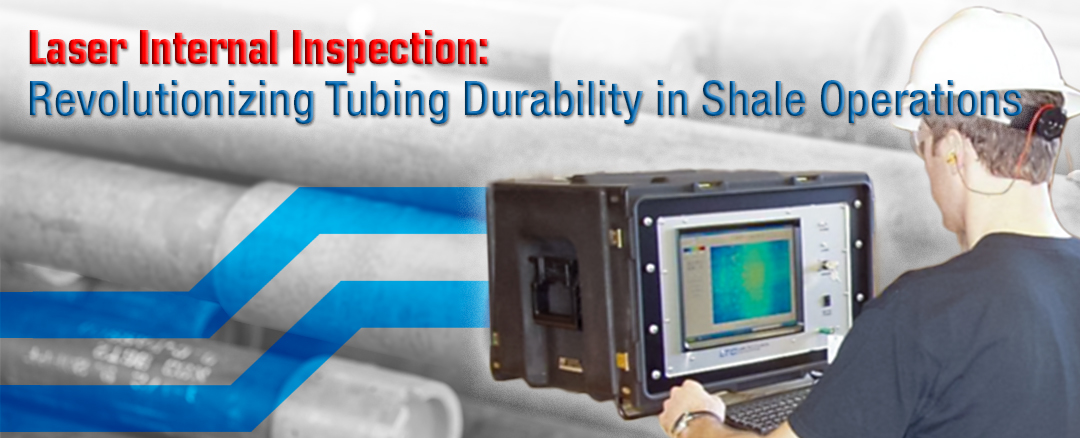Laser Internal Inspection: Revolutionizing Tubing Durability in Shale Operations

By: Jason Waligura
As the demand for more durable and longer-lasting production tubing in shale operations increases, Stress Engineering Services (SES) is leading the way with groundbreaking solutions. A prime example of such innovation is the use of boronized production tubing in shale basins, which has shown significant promise in extending the lifecycle of tubing strings used in wells.
Boronized tubing undergoes a specialized process where a thin layer of boron is applied to the inside of standard 2 7/8” carbon steel tubing, making it more resistant to abrasion and corrosion. This advanced treatment has been widely adopted by major operators in the Bakken Shale Basin of North Dakota for use in critical sections of wells, with its application gradually expanding to other shale basins.
Challenges with Traditional Inspection Methods
However, boronized tubing presents unique challenges in terms of inspection. Traditional methods such as Electro Magnetic Induction (EMI) are ineffective as the boronized layer disrupts the signal, often resulting in false negatives. This limitation has necessitated the development of alternative inspection technologies that can accurately assess the condition of the tubing.
The Laser-Based Solution
To address this gap, SES has pioneered the use of laser-based inspection technology. Our innovative BEMIS™ (Bore Erosion Measurement System) has been adapted to fit the smaller 2 7/8” tubing, a modification that required intricate rail designs and an extended range for the laser head. This adaptation was rigorously tested at our Waller Testing Facility and proved to be a resounding success.
The laser system operates by rotating at 300 rpm, taking 5,000 measurement points with each rotation. These measurements create a detailed point cloud of radii, offering an unparalleled view of the internal surface of the tubing—as if one could fly down the pipe and visually inspect it. This method not only enhances the accuracy of the inspections but also drastically increases their efficiency, with our teams capable of inspecting up to 57 joints per day under field conditions.

Figure 1: Pipe Tally
The pipe is listed on the tally and is given an API™ color designation based on wall loss from nominal. This determines the color band the pipe will receive. Red bands will not be rerun.

Figure 2: Pipe map and damage cross section.
Impactful Results and Industry Acceptance
The results have been nothing short of impressive. In many cases, tubing that was previously rejected by EMI inspections was found to have sufficient wall integrity for reuse, leading to significant cost savings for operators. This innovative approach has not only garnered the support of industry giants like ConocoPhillips and Bluewater Thermal Solutions, but it has also begun to attract interest from new operators, signaling a growing recognition of its effectiveness.
As SES continues to refine and expand this technology, the potential for its application across various regions and market segments looks promising. It’s a testament to how innovative engineering solutions can create win-win scenarios, enhancing operational efficiency while delivering substantial cost savings.
Looking Ahead
The journey of innovation is an ongoing one at SES. With each successful application, we move closer to setting new industry standards, paving the way for more sustainable and cost-effective solutions in the energy industry.

Jason Waligura – Staff Consultant, Houston Office
Jason Waligura is a graduate of Texas A&M University and has more than twenty-five years of experience in the drilling industry. He has worked on drilling engineering projects for oil and gas majors as well as small independents. He has drilled and completed wells in DW GOM, Onshore TX and WY, and Africa. He has also managed a small operating co. which included land negotiations, drilling, production and pipeline/sales.
Jason has been a part of several industry firsts such as dual activity, cyber drilling controls, downhole LOT, tophat subsea blowout collection, and laser ID inspection of riser.




Leave a Comment
You must Register or Login to post a comment.